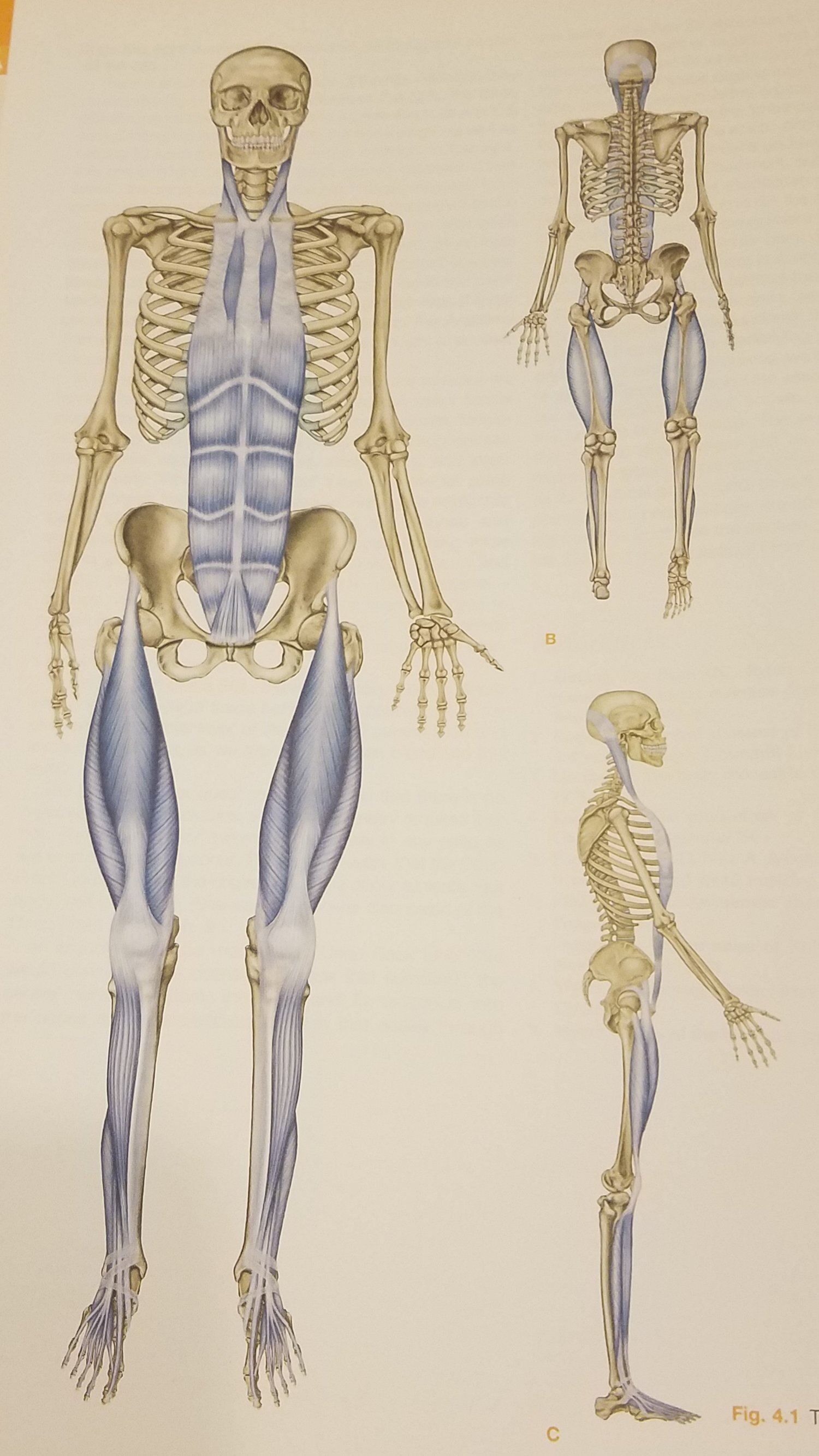Fascia Friday - Part 2 - Superficial Front Line
Reminder (from part 1)
We’re going to discuss “trains” of fascia and how they connect parts of our bodies, just like train tracks connect parts of a state/country/etc. The use of fascial “trains” was introduced by Thomas Myers in his book, Anatomy Trains. This series of posts will look at the major fascial “trains,” what they connect, common issues in each train, and how to deal with those issues to relieve pain and improve movement.
Superficial Front Line
The next fascial train that we’re going to look at is called the Superficial Front Line. Remember that “superficial” simply refers to the fact that it’s closer to the surface of your skin than other structures. In later posts, we’ll look at “deep” lines which are farther from the skin and closer to your bones and internal organs.
Here is a look at the Superficial Front Line:
Superficial Front Line from Anatomy Trains by Thomas Myers (p.98)
As you can see, the Superficial Front Line (SFL) runs from the tops of the toes, along the top of the foot, across the ankle, up the front/side of the lower leg (including the tibialis anterior (runners know this muslce- it’s where most “shinsplints” are felt!), across the knee, up the front of the upper legs (the quads) and this part ends at the hip. The second portion of the SFL starts at the pelvic bone, includes the abdominal muscles and moves upward including muscles that are in the mid-line (near the sternum), moving up to the sternocleidomastoid or SCM (long name, but you use this muscle when lifting your head while lying down). The SCM actually goes from the front of your chest (clavicle) and connects to the lower rear of the skull. This is a large train and its two portions tie the entire front of the body together.
The Superficial Front Line (SFL) works opposite the Superficial Back Line (SBL) (from last week’s post) to keep the body in position. The SFL usually results in a downward (toward the feet) pulling motion, while the SBL tends to elevate the back (upward force). As you can imagine, dysfunction in either or both of these lines can result in problems with the neck, arm position, low back or even breathing (not enough space for lungs to expand). It’s important to understand how the SFL and SBL work “against” each other and how issues in one affects the other.
Let’s look at an example of how SFL issues might appear:
Lower legs - the muscles of the front lower leg often become “stuck” due to prolonged holding in one position (due to limited ankle flexibility or footwear choice (any shoe with an elevated heel)).
Tight quads - upper leg tissue becomes short and tight from prolonged sitting since the muscles are shortened while in a seated position (while the muscles in the SBL are lengthened, but tight as well), However, the short, tight quads aren’t as “noisy” as the hamstrings, which are already lengthened!
PRO TIP - when you are stretching after sitting/driving for awhile…don’t stretch your hamstrings - they’re already lengthened!! Instead stretch your quads (grab your ankle as you raise your foot up behind your buttock and hold for a few seconds).Head forward posture or rounded shoulders - a shortened and tight SFL will pull the head and neck forward and down. This could limit breathing capacity (as does other shortening in the SFL).
So what can you do?
Be sure to use a ball to work the fascia on the bottom of the foot - this was a tip last week, but this time it’s to ensure that there is enough ankle flexibility/mobility to keep the front lower leg muscles from becoming “stuck”
Walk barefoot as often as possible - walking barefoot allows the foot to move more naturally and removes the elevation in the heel, which can lead to issues in lower SFL (shinsplints).
Take breaks from computer/phone usage and stretch your head backward periodically (try to balance the time you are “head down” with the time you stretch - life is all about balance)
Realize how interconnected your body is and ensure that your fitness program (strength/flexibility/etc.) addresses the connectedness of your body
Ensure that you have a plan to maintain your soft tissue using self-care or massage therapy so that you maximize your mobility - which can also help when you are working on your strength/stability.

